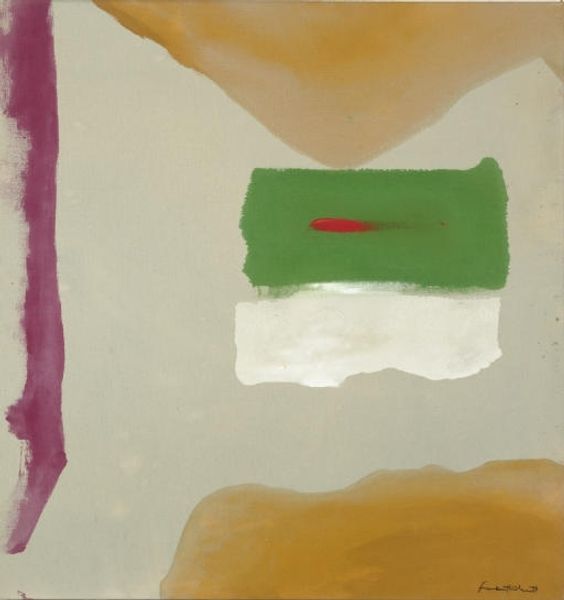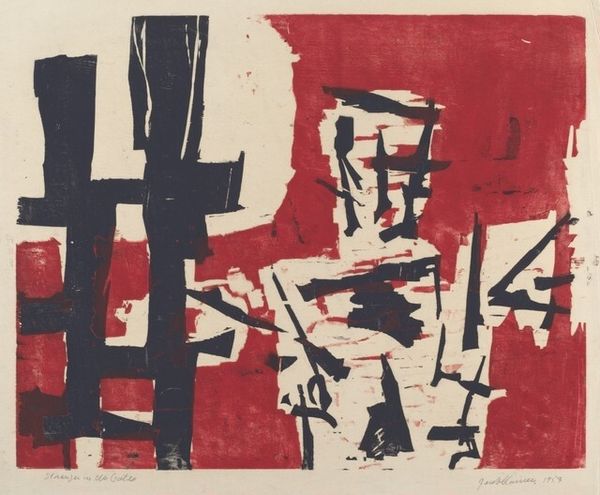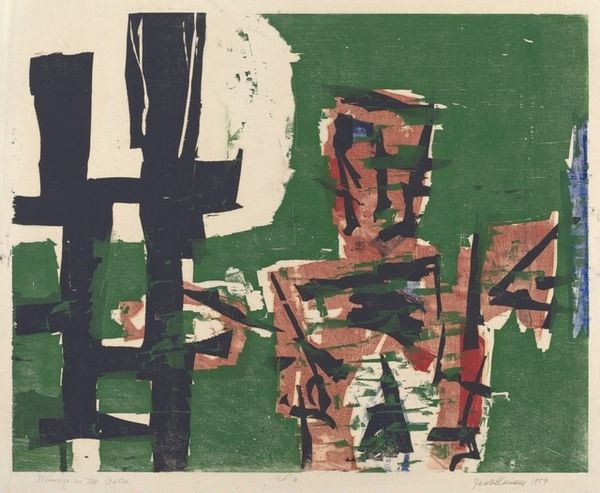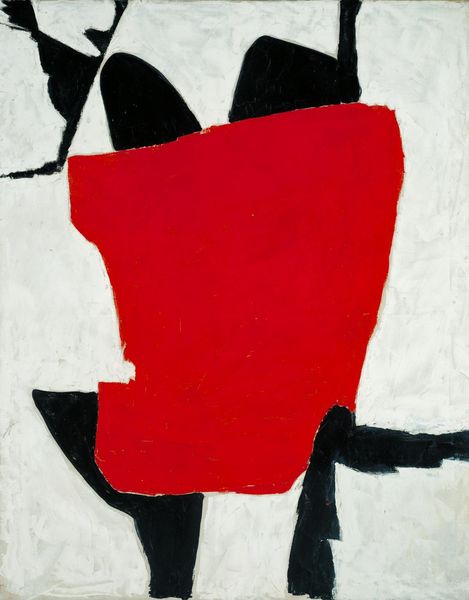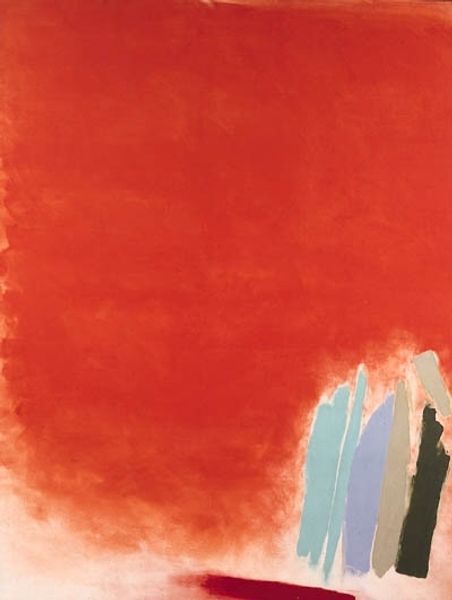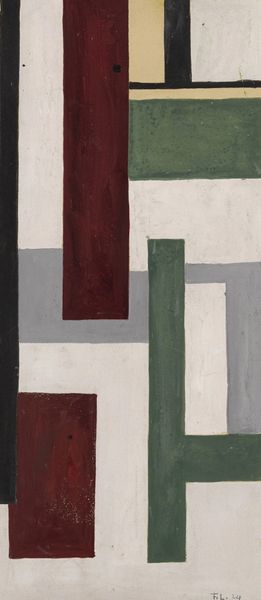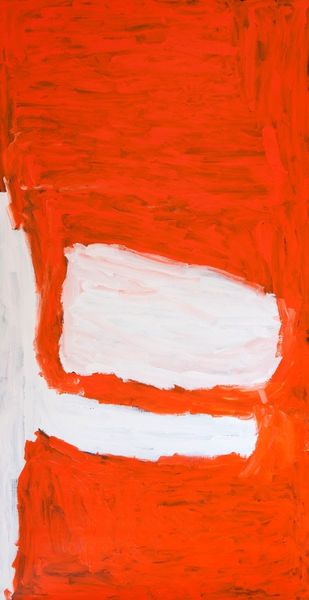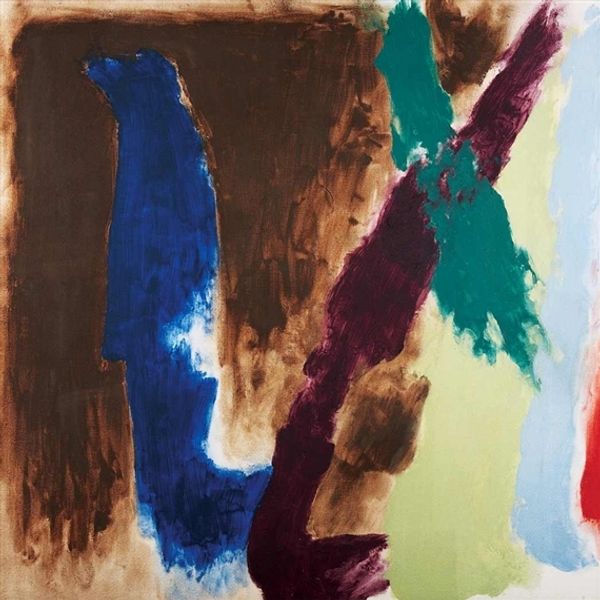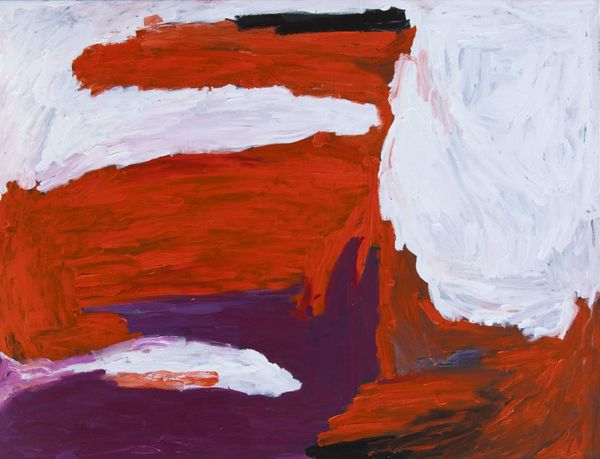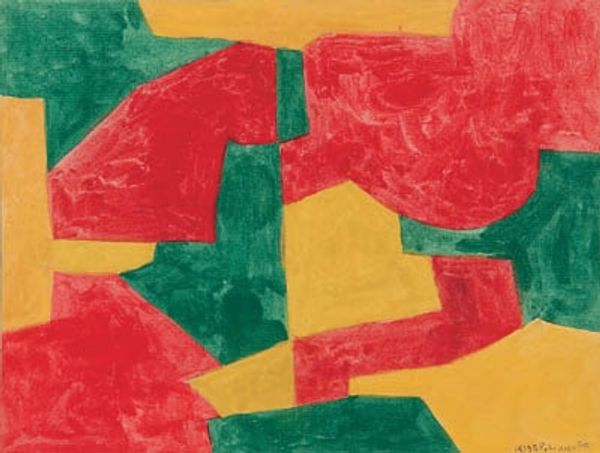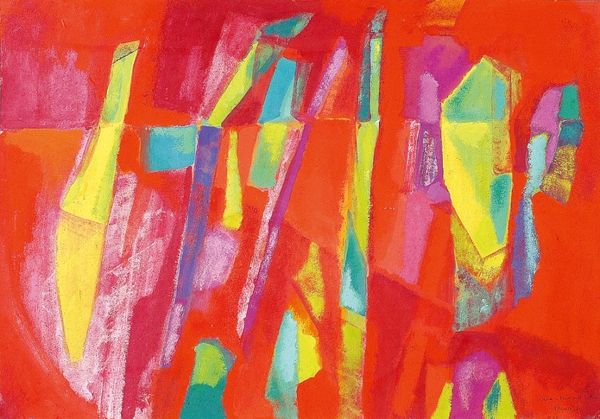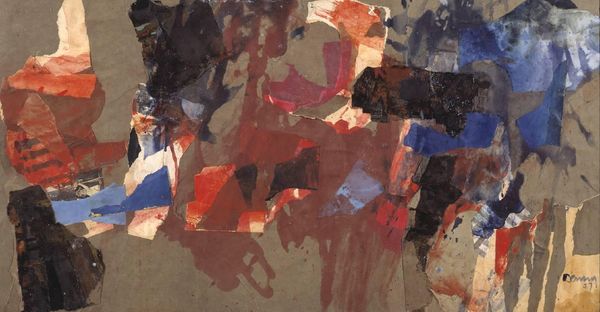
acrylic-paint
#
acrylic
#
colour-field-painting
#
acrylic-paint
#
abstraction
#
modernism
Copyright: Serge Poliakoff,Fair Use
Curator: I find myself immediately drawn to the seemingly simple yet powerful visual dynamic unfolding in this abstract piece. What strikes you first? Editor: It's striking, a bit unsettling even. There's a visual tension between the shapes; the abrupt colour changes are unnerving in a way I didn't expect. Curator: It might interest you that this untitled work is by Serge Poliakoff. Best known for colour-field painting and abstraction, it displays an approach that leans into pure forms, devoid of explicit narrative. What might those colours represent in absence of a distinct storyline? Editor: Considering the shades used – primarily a vibrant red, deep green and clean white – one cannot ignore the connection to nationalist symbology, particularly in the context of post-war European identity. There is an intentional deployment of colour; they aren’t passive. What underlying emotional architectures is the artist intending to stimulate here, with such bold simplicity? Curator: It's fascinating how colour becomes the carrier of emotions that exist beyond language itself. You pointed out nationalism – consider also that geometric forms here aren’t about representation in a literal sense. They speak of hidden orders. The symbolic use of colour might access shared emotional landscapes; memories held in collective experience. What psychological spaces do they seem to create? Editor: To me, there’s something combative about it. This canvas becomes an arena of contrasting ideals clashing against each other; this boldness might have represented new ideological structures in Europe or maybe the fight between such constructs as they lost and gained traction with specific audiences, after decades of war and colonial policies. This artwork can also be seen as a call for new ideological interpretations that question the accepted standards. It creates both physical and intellectual space for this combat. Curator: So we see colour as an emblem but also perhaps a confrontation, which I suppose gives the artwork a certain potency. To think how an arrangement of shapes can be seen in the broader context of cultural change is remarkable. Editor: Yes, and perhaps that unsettling feeling comes from seeing unresolved tension. The questions these images stir seem as important as whatever answers they might attempt. Curator: Well, considering its wordless and abstract nature, these questions appear to invite active engagement for further reflection rather than closure, a shared cultural contemplation. Editor: Definitely; a colour-soaked space for inquiry, I believe.
Comments
No comments
Be the first to comment and join the conversation on the ultimate creative platform.
